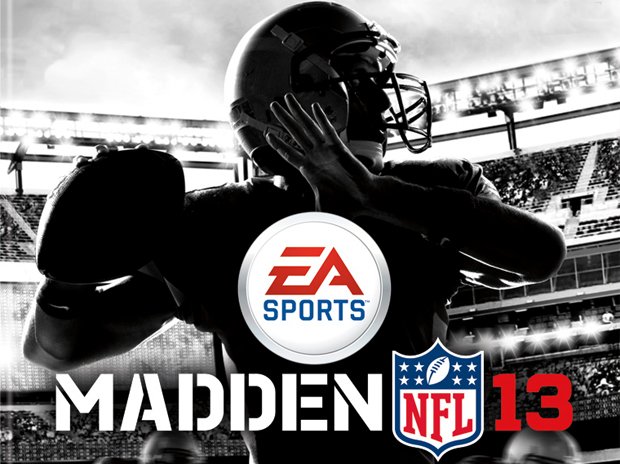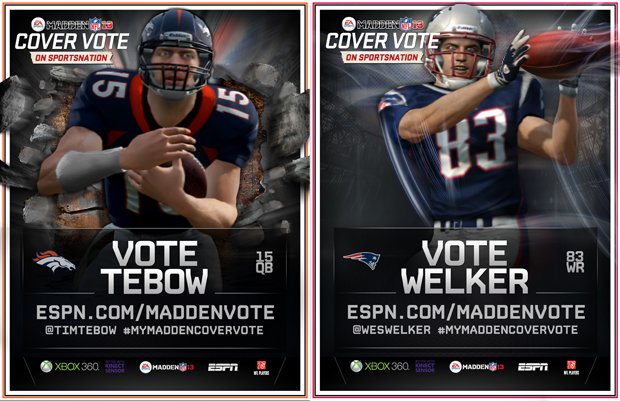Madden 13s cover vote: a phenomenon born in 20 minutes
How busted brackets and a dalliance with a spreadsheet created the most successful fan-engagement platform in ESPN’s history

Box Score is a weekly column that offers a look at sports games and the athletic side of the industry from the perspective of veteran reviewer and sports fan Richard Grisham.
Around this time last year, Anthony Stevenson sat at his desk with a March Madness bracket in front of him. He analyzed the matchups, considered opportunities for upsets and blowouts, and made a few picks. Suddenly, inspiration hit. Twenty minutes later, the most successful fan engagement ever on ESPN’s platform was created. Twenty minutes.

“I remember coming into the office one day early in March (of 2011), and I was thinking about March Madness,” Stevenson, the director of marketing for the Madden franchise, told me last week. “I was thinking about how frustrated I always get after the first weekend when all of my upsets don’t pan out and I have to rip up my bracket. I thought it’d be really cool to have something else to get excited about. I started messing around in an Excel spreadsheet, wondering what a seeded Madden cover bracket would look like, and literally within 20 minutes, this thing was born.”
‘This thing’ turned out to be the Madden NFL 12 cover vote, an event that generated unprecedented fan participation and endless deliberation among a rabid – and vocal – consumer base.
“I don’t think anybody quite understood exactly the kind of reaction we would get,” Stevenson recalled. “When it was all said and done, after five weeks we had over 13 million votes and 160 million daily media impressions [on ESPN and EA’s voting sites].”
Those numbers were far beyond anyone’s expectations, setting records and generating the kind of fan interest no one anticipated.

“In prior years the announcement of the cover athlete was a big deal,” he continued. “We’d done them with the NFL draft, and there’s no other video game that ever had a moment like that. But that’s the point – it was a here today, gone tomorrow moment. At our peak when Drew Brees was our cover athlete in Madden 11, we had about 80 million media impressions come out of that [for one day]. With the vote, we had 160 million daily impressions over 5 weeks. It took on a life of its own, and transcended video games. When we looked at what the finals brought us, this interesting matchup of Peyton Hillis versus Michael Vick, it really couldn’t have gone any better for us.”
Weekly digests, tales from the communities you love, and more
What made that even more surprising was that all of this took place with the toxic NFL lockout in the background.
“We knew that there was, candidly, going to be a lot of negative conversation going on around the brand that our game is built on,” Stevenson said. “We really were trying to figure out a way that we could try and turn some of that conversation positive. It was really a scary proposition for EA Sports when fans were asking if Madden NFL 12 would even come out. That’s really, really scary for everybody in our offices; we knew absolutely 100 percent – full season, partial season, whatever – Madden NFL 12 would launch. But it’s really scary when your fans and your retailers and media are asking if that’s the case.”
Ultimately, EA’s goal for the cover vote was twofold: turn the conversation positive, and use the vote as a platform to let everyone know Madden NFL 12 would indeed be released. That’s exactly what it did.

By the time the dust had settled and Hillis surprisingly won the vote to become the Madden 12 cover athlete, Stevenson knew the Madden 13 vote would need to be bigger and better. So he added a second layer to it, a “play-in” round in which two players from every team would square off against each other in a Facebook vote for the rights to be seeded in the main 32-man bracket. ESPN will broadcast multiple in-depth shows, starting with the reveal of the 32 eligible players on March 21, and culminating with the cover-athlete winner the night before the NFL draft on April 25.
It’s safe to say “mission accomplished.” We’re in March, and the NFL is in hibernation. Baseball is starting up, college hoops is in high gear and a new gaming platform has just been launched. Yet wherever you look or listen in the sports-game enthusiast world, arguments over which two players from each team should be in the Madden play-in round dominate the conversation.
Of course, leaving the cover athlete to a fan vote – even in a controlled setting where EA provides all of the potential endgame options – is risky. For one thing, a Madden cover athlete has traditionally represented an attitude or feature of that year’s offering. The famous Ray Lewis cover told Madden 2005 players that defense and big hits were on the docket, while the then-multifaceted Vince Young’s 2008 appearance signaled a focus on players as weapons. There’s no way to build Madden around a vote that ends four months before it ships.
“I actually love it,” laughed Stevenson. “It becomes a snapshot in time. Five years from now, when we look back at the Madden NFL 12 cover with Peyton Hillis on it, that’s going to tell you where we were as a football ‘society.’ This was a guy who came out of nowhere and, quite frankly, he won a lot of people’s fantasy leagues. This was a guy you got off waivers, ran for 1200 yards, caught 60 balls and had double-digit touchdowns. That’s exciting, and it’s like winning the lottery. This becomes a snapshot of what was going on in the National Football League and the broader football fanbase.”

As this year’s vote moves into high gear, Stevenson is constantly thinking about the future while enjoying his creation in the present. When I asked him what kinds of impact the rapidly evolving industry will have on the cover vote – more digital distribution, new consoles and platforms, for example – his answer surprised me. Considering the explosive success of the fan participation, though, it shouldn’t have.
“I think we’ll take it beyond (a cover vote),” he offered. “It will start to bleed into the game itself; getting the fans involved in the features that we put in the game, everything from how players are rated to features themselves. Fans will have a voice in the future of the Madden NFL franchise."
Richard Grisham has been obsessed with sports and video games since childhood, when he'd routinely create and track MicroLeague Baseball seasons on paper. He currently lives in New Jersey with his wife and four-year old son, who he'll soon be training to be an NFL placekicker. As a freelance journalist and writer, his work has appeared in GamesRadar, NGamer, and 1UP.


